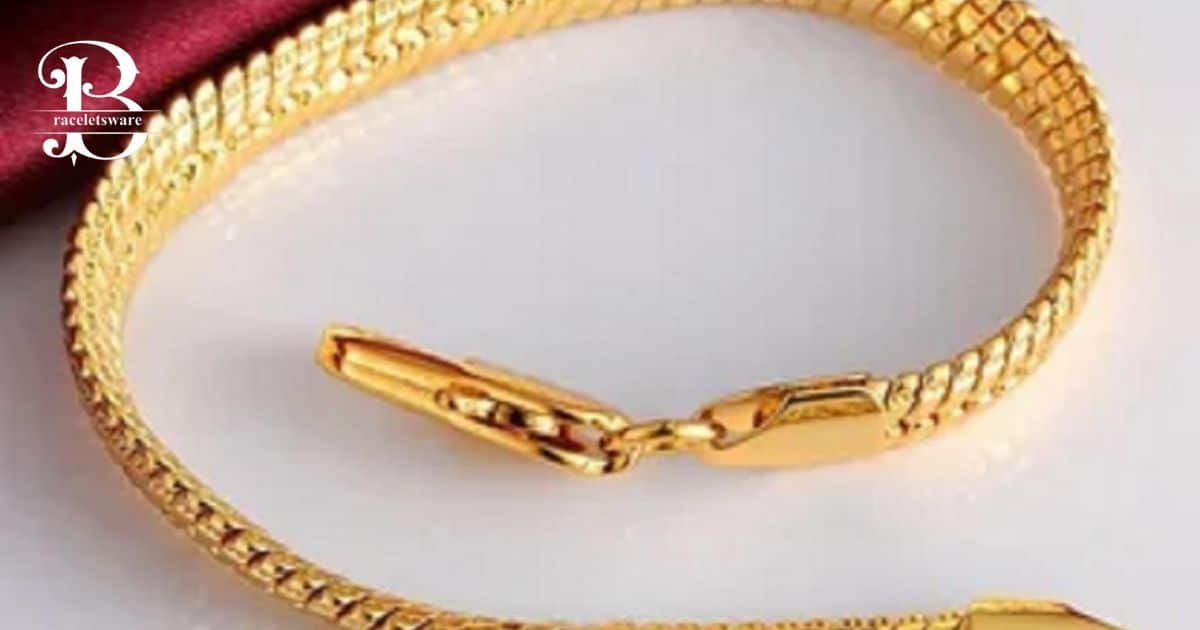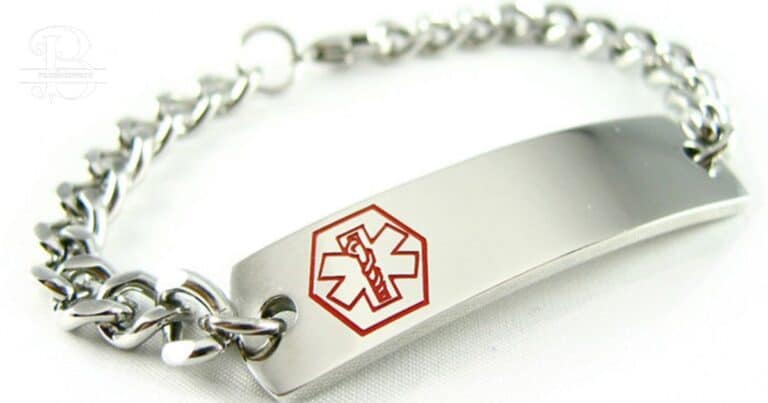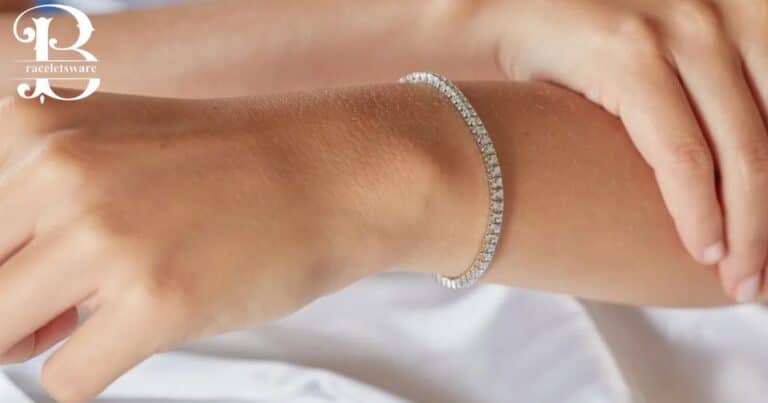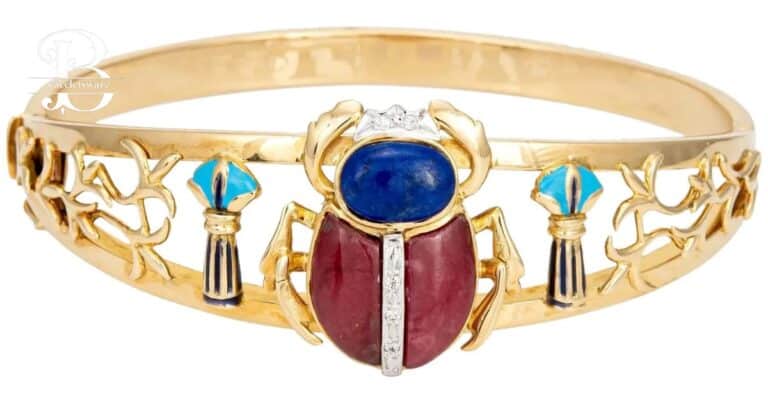How To Tell If A Gold Bracelet Is Real?
To know if a gold bracelet is real check for markings like karat stamps. Real gold isn’t magnetic so use a magnet. Do an acid test on a hidden spot real gold won’t react. Genuine gold usually doesn’t tarnish or turn your skin colors.
Unlocking the mystery of real gold bracelets requires a keen eye. Here raises a question, How To Tell If A Gold Bracelet Is Real? Examine the markings like karat stamps to reveal their authenticity. A simple magnet can be your ally real gold won’t cling to it. Venture further with an inconspicuous acid test as genuine gold remains unresponsive. Seeking professional guidance or using a gold testing kit adds precision to your investigation. true gold maintains its lustrous sheen without tarnishing over time.
To determine if a gold bracelet is real you can follow a few simple steps. Start by checking for hallmarks or stamps on the bracelet as genuine gold jewelry often has these markings.Use a magnifying glass to get a closer look. Another way to assess the authenticity of a gold bracelet is to check its weight.
Check for Hallmarks and Stamps
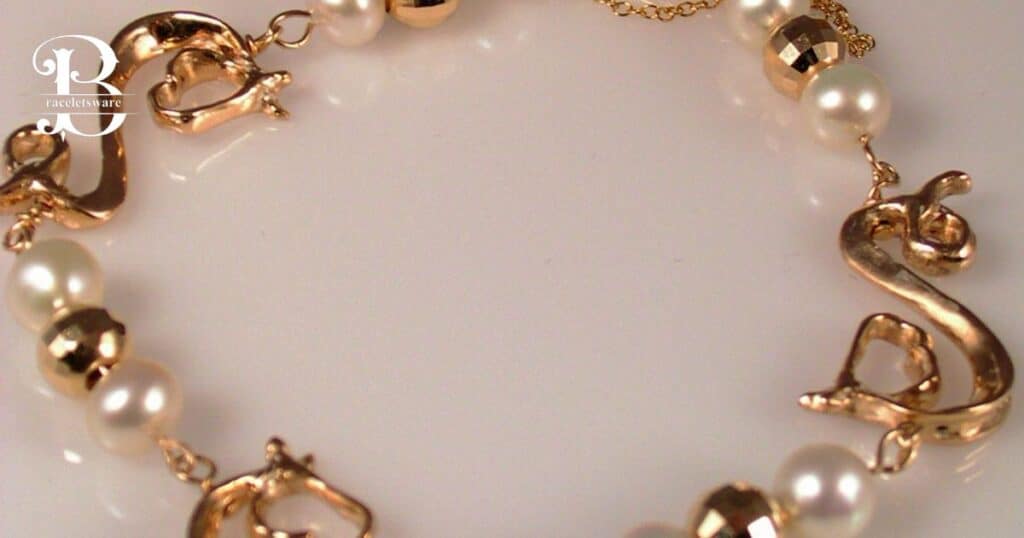
When assessing the authenticity of a gold chain bracelet, one crucial step is to check for hallmarks and stamps. Genuine gold jewelry typically carries specific markings that indicate its purity and authenticity. These hallmarks may include numbers denoting karats or symbols representing the manufacturer’s authenticity certification.
To conduct this examination, use a magnifying glass to get a detailed view of these tiny engravings on the chain bracelet. Keep in mind that authentic gold pieces are more likely to have clear, well-defined hallmarks. If you encounter a lack of markings or if they appear unclear, it may raise suspicions about the chain bracelet’s authenticity.
This method serves as an initial and valuable step in determining whether a gold chain bracelet is genuine or potentially counterfeit.
Magnetic Test
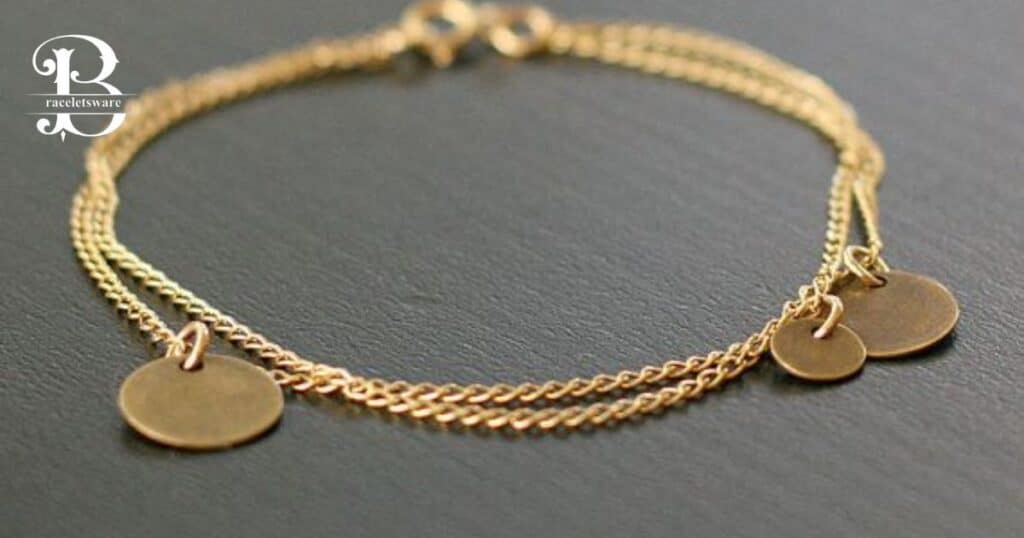
Another effective method to ascertain the authenticity of a gold bracelet is by conducting a magnetic test. Real gold is not magnetic so this test serves as a quick and straightforward way to identify genuine gold.
Simply take a small but strong magnet and bring it close to the bracelet. If the gold bracelet is attracted to the magnet or exhibits any magnetic properties it is likely not authentic gold. Genuine gold does not respond to magnets due to its non ferrous nature.
Keep in mind that this test provides a preliminary indication and for a more comprehensive assessment it is recommended to combine it with other verification methods such as examining hallmarks and seeking professional advice from a jeweler.
Examine Color and Shine
| Aspect | Authentic Gold | Potential Imitation |
| Color | Rich, Distinctive Gold Color | Unusual or Tarnished Appearance |
| Shine | Lustrous and Consistent Shine | Dull or Uneven Shine |
| Tarnish | Minimal or No Tarnishing | Prone to Tarnish Over Time |
| Reflection | Reflects Light Consistently | Uneven or Poor Reflection |
| Surface Consistency | Smooth and Even Surface | Bumps, Irregularities or Coatings |
| Comparison with Known Gold | Consistent with Genuine Gold | Deviates from Typical Gold Characteristics |
Weight Assessment
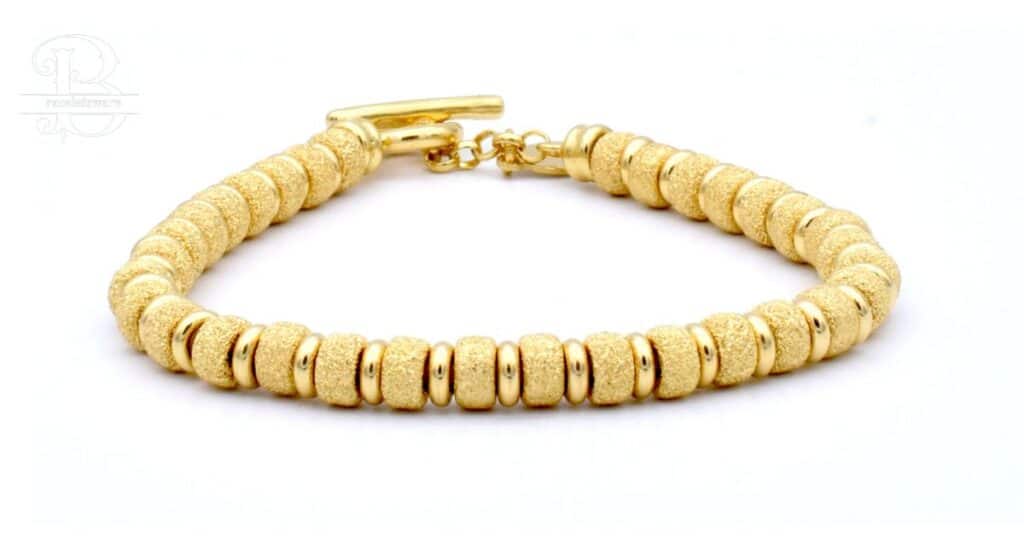
A weight assessment is a valuable method for determining the authenticity of a gold bracelet. Genuine gold has a specific density meaning it is heavier than many other metals of similar size. When evaluating a gold bracelet it should feel substantial and have a noticeable weight in your hand.
This weight is a result of the density of gold and imitations made from lighter materials may feel noticeably lighter. To conduct a basic weight assessment compare the weight of the gold bracelet to your expectations for its size.
While this method is not foolproof as some counterfeiters may mimic the weight using other metals it provides an initial indicator of authenticity. For a more accurate assessment it is recommended to combine the weight check with other verification techniques such as examining hallmarks or seeking the opinion of a professional jeweler.
Visual Inspection
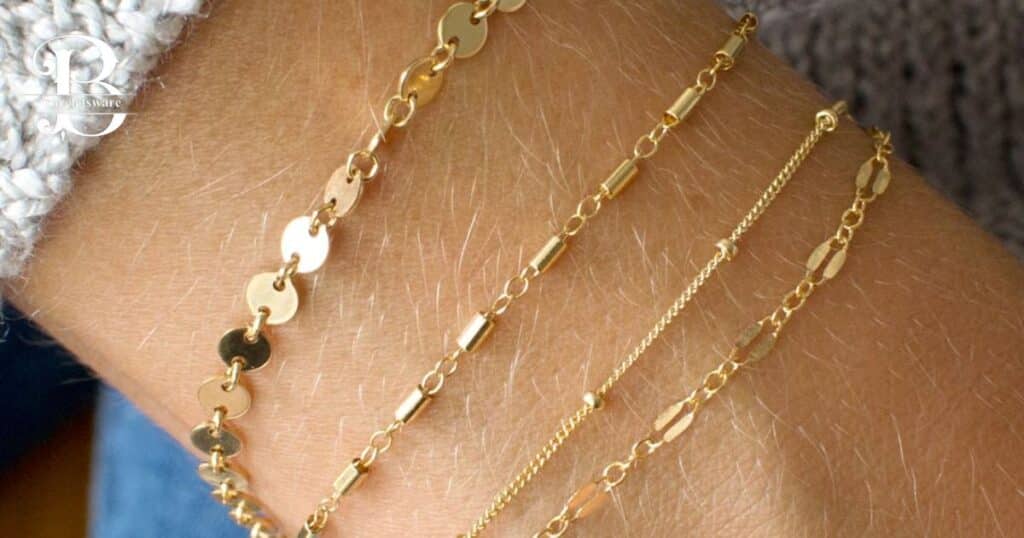
Visual inspection plays a crucial role in the process of determining the authenticity of a gold bracelet. One should carefully examine the physical characteristics that are indicative of genuine gold. Authentic gold exhibits a distinct and rich color that sets it apart from imitations. A genuine gold bracelet should maintain a lustrous shine with minimal to no tarnishing over time.
During the visual inspection be wary of any signs of discoloration, fading or unevenness on the surface as these may be indicators of a potential imitation. The surface should be smooth and consistent without bumps or irregularities. It’s important to note that gold plated or gold filled bracelets may show signs of wear over time potentially revealing a different metal beneath the gold layer.
A thorough visual examination coupled with other verification methods, provides a comprehensive approach to determining the authenticity of a gold bracelet. If any doubts persist seeking the advice of a professional jeweler is recommended for a more accurate assessment.
Acid Test
The acid test is a reliable method used to verify the authenticity of a gold bracelet. This test involves using a solution of nitric acid to assess the reaction of the metal. Genuine gold does not react to nitric acid while other metals or alloys may produce a reaction.
To conduct the acid test a small scratch is made on an inconspicuous part of the bracelet and a drop of nitric acid is applied to the exposed area. If the metal remains unaltered maintaining its gold color it is likely authentic.
if there is a reaction such as a change in color or the appearance of bubbles it suggests that the bracelet may not be made of real gold.
Consult a Professional Jeweller
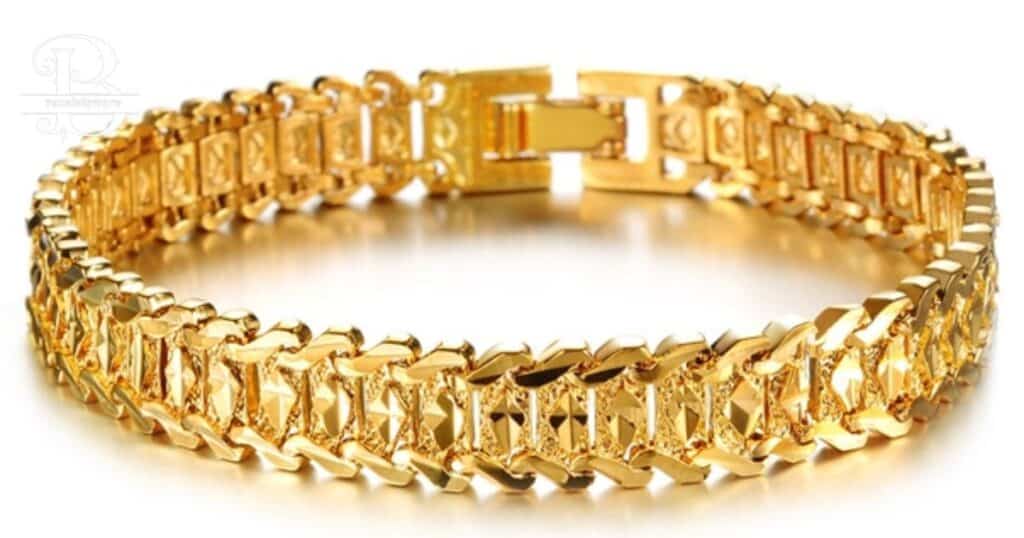
Consulting a professional jeweler is a wise and conclusive step in determining the authenticity of a gold bracelet. Jewelers possess the expertise specialized tools and knowledge to provide an accurate assessment.
They can conduct thorough examinations, including checking for hallmarks, assessing weight and performing advanced tests like electronic gold testing or X-ray fluorescence analysis.
Purchase from Trusted Sources
To ensure the authenticity of a gold bracelet, it is crucial to make the purchase from trusted sources. Reputable and established jewelers authorized dealers and well known jewelry stores are generally reliable sources for genuine gold jewelry. Here are some key considerations when choosing a trusted source:
Reputation
Look for sellers with a solid reputation in the jewelry industry. Seek recommendations from friends, family or online reviews to gauge the trustworthiness of a particular seller.
Certifications
Legitimate jewelry sellers often provide certifications that verify the gold content and authenticity of their products. Look for certifications from recognized gemological laboratories.
Established Stores
Opt for well established jewelry stores or brands that have been in business for a significant period. Established businesses are more likely to uphold quality standards.
Transparency
Trustworthy sellers are transparent about the details of their products, including the karat purity of the gold, weight and any additional information about the jewelry’s composition.
Return Policy
A reputable seller typically offers a clear and fair return policy. This allows buyers to return or exchange the gold bracelet if they have any concerns about its authenticity.
Avoiding Unverified Channels
Be cautious about purchasing gold jewelry from unverified or untrustworthy sources especially online marketplaces with limited oversight. Counterfeit products are more prevalent in such environments.
Frequently Asked Questions
Can a magnet determine if a gold bracelet is authentic?
Yes, real gold is not magnetic. If a bracelet is attracted to a magnet it may not be genuine gold.
How can I avoid buying fake gold online?
Stick to reputable online sellers or established platforms and research customer reviews and seller certifications before making a purchase.
Do gold plated bracelets pass authenticity tests?
Gold plated bracelets may show signs of wear over time potentially revealing a different metal beneath the gold layer during inspections
Final Thoughts
Determining the authenticity of a gold bracelet involves a combination of careful examination and if needed professional evaluation. Checking for hallmarks, conducting a magnetic test and assessing color, shine and weight are valuable initial steps. The acid test offers a more conclusive result but should be approached with caution.
Visual inspection guided by an understanding of genuine gold characteristics is crucial. Consulting a professional jeweler adds an extra layer of certainty benefiting from their expertise and specialized tools. Purchasing from trusted sources preferably well known jewelers ensures the legitimacy of the gold bracelet. By following these steps and considering reputable sellers individuals can confidently navigate the process of verifying the authenticity of their gold jewelry.

Amara Rosewood, with 8 years of expertise in bracelet design, is the creative force behind BraceletsWare. Her passion and skill converge in each piece, crafting timeless accessories that redefine style.

